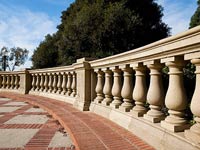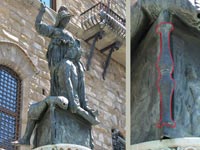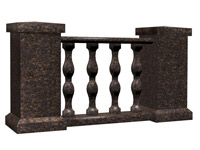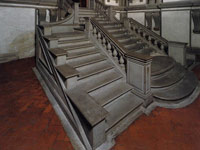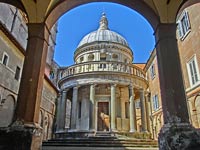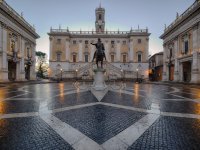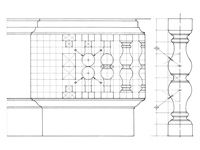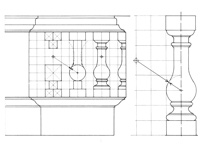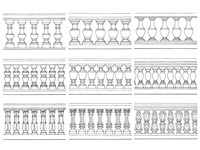The very first balusters were columns of small size, and they decorated the window openings. However, in Ancient Greece and Rome, balusters were not used as an architectural element. To decorate the facades, as well as to decorate the terraces of parks, the balusters began to be applied later, during the Renaissance. Balusters were widely used to protect the numerous balconies in Verona and Venice during the Quattrocento era. Their shape, so familiar and now - in the form of two bulbs, arranged vertically opposite each other, intercepted by a ring.
This form is found on the surviving Roman bas-reliefs, they show tables and chairs with legs carved from wood, or carved from stone. It is this pattern of balusters that can be seen on the corners of the base of the famous bronze statue of Donatello "Judith and Holofernes" (1460), located in Loggia del Lanzi, in Florence.
The first architect who used balusters made of natural stone as an architectural element, art experts called Giuliano da Sangalo - he used baluster for decorating the terrace and stairs of the Medici Palace in the town of Poggio-i-Cayano in about 1480. In 1502, the most famous architect, the author of the dome of the Cathedral of Santa Maria del Fiore in Florence, Brunelleschi creates his masterpiece - a miniature chapel-rotunda Tempietto in Rome, using a light balustrade between its first and second tier. In the XVI century, virtually no significant construction does not remain without balusters made of marble. His popularity is due to the balustrade genius Michelangelo, who used them in their buildings and first proposed a new form in the form of a vase, shifting the center of gravity downwards. Among the most famous masterpieces by Michelangelo are the staircase of the Laurentian Library in Florence, the Senators 'Palace and the Conservators' Palace in Rome on the Capitoline Hill to Piazza del Campidoglio.
Since the Renaissance, balusters and balustrades made of granite and marble have been actively used in all ages, have been applied in all stylistic directions, easily adapting to the requirements of fashion. It is impossible to imagine the building of the Hermitage, the Kazan Cathedral or the Smolny Cathedral in St. Petersburg without parapets using balusters and half-balusters.
And nowadays, balusters made of granite continue to decorate the facades, stairs, balconies. They are widely used and in landscape design, when decorating embankments, decorating gardens and parks. The balusters made of stone create an original image that gives the whole construction a one-of-a-kind, memorable for a long time, worthy of a rich appearance.








 Site search
Site search